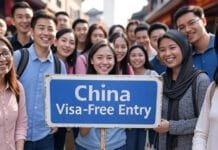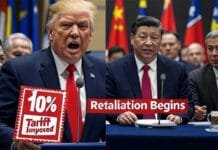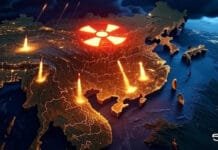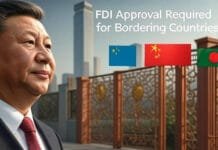External Affairs Minister Dr. S. Jaishankar has commenced a high-profile three-day diplomatic tour of Singapore and China, marking his first visit to Beijing since the 2020 LAC standoff. The visit, which starts today, is positioned to shape the contours of India’s regional influence and bilateral cooperation on strategic issues, including the supply of rare earth metals, a critical component in global manufacturing, defense, and clean energy technologies.
Singapore Leg: Strengthening Bilateral Ties and Economic Synergy
On Sunday, Dr. Jaishankar is scheduled to engage in comprehensive bilateral discussions with his Singaporean counterpart, focusing on boosting economic, strategic, and technological cooperation. Singapore, a vital Southeast Asian ally and one of India’s largest trading partners, offers a pivotal platform to advance India’s Act East Policy.
Key topics expected to dominate the discussion include:
Investment in critical digital infrastructure
Maritime security in the Indo-Pacific region
Joint technological development
Supply chain resilience in essential commodities
Financial services and fintech partnerships
India and Singapore have consistently enjoyed strong diplomatic ties, but this visit aims to upgrade the relationship into a 21st-century economic and security partnership, particularly in the backdrop of rising geostrategic tensions in the South China Sea.
China Visit: First High-Level Diplomatic Exchange Since 2020 Border Tensions
Dr. Jaishankar’s visit to Tianjin, China, represents the first official diplomatic trip by an Indian External Affairs Minister since the violent Galwan Valley clashes in June 2020. His presence signals a cautious step toward potential normalization of strained relations with Beijing.
This leg of the visit is focused on two main tracks:
1. Participation in the SCO Foreign Ministers’ Meeting
Beginning July 15, Jaishankar will take part in the Shanghai Cooperation Organization (SCO) Council of Foreign Ministers meeting in Tianjin. Hosted by Chinese Foreign Minister Wang Yi, the gathering brings together top diplomats from all SCO member states, including Russia, Kazakhstan, Uzbekistan, Kyrgyzstan, Pakistan, and Tajikistan.
The SCO discussions will spotlight:
Regional counter-terrorism strategies
Afghanistan’s evolving security landscape
Cross-border connectivity
Multilateral trade facilitation
Public health cooperation post-pandemic
India’s participation aims to ensure strategic balance within the SCO, asserting New Delhi’s independent foreign policy amid China-Russia axis dominance.
2. Bilateral Dialogue with Chinese Officials
Apart from the multilateral format, Dr. Jaishankar is expected to hold direct talks with Wang Yi and other senior Chinese officials to address lingering tensions along the LAC. With over 20 rounds of military and diplomatic talks yet to fully resolve the standoff in eastern Ladakh, the bilateral dialogue will seek forward momentum on issues such as:
Military disengagement and de-escalation
Restoration of border peace
Resumption of trade across friction zones
New confidence-building mechanisms (CBMs)
Both sides recognize that stability along the border is essential for the broader normalization of ties.
Rare Earth Elements: A Strategic Conversation
One of the most anticipated agenda points during Jaishankar’s China leg is the supply and regulation of rare metals, also known as rare earth elements (REEs). These metals are indispensable for:
Electric vehicles and batteries
Semiconductor fabrication
Wind turbines and solar panels
Defense electronics and aerospace systems
Given that China dominates over 60% of global rare earth production, India is keen to diversify sources and explore joint ventures. The meeting is likely to address:
India’s interest in secure, uninterrupted REE supply chains
Collaborative mining ventures in third countries
Technology transfer for REE refining and recycling
Establishing a China-India working group on critical minerals
The stakes are high as India prepares for an accelerated green transition and domestic chip manufacturing push under its Make in India and PLI (Production-Linked Incentive) schemes.
Backdrop of Strategic Visits: Doval and Rajnath Paved the Path
Dr. Jaishankar’s visit follows closely on the heels of recent visits by Defense Minister Rajnath Singh and National Security Advisor Ajit Doval to China. Their visits, focused largely on defense and security mechanisms, have laid groundwork for this high-level diplomatic engagement.
The continuity of these high-profile engagements underlines India’s calibrated approach: balancing firmness on border issues with pragmatic diplomacy to maintain peace and facilitate cooperation in non-contentious areas such as trade, climate, and connectivity.
India-China Trade: Cooperation Amidst Competition
Despite political tensions, bilateral trade between India and China has seen significant volumes, touching over $136 billion in 2024. However, the deficit remains skewed in China’s favor. Dr. Jaishankar’s visit provides an opportunity to:
Demand greater market access for Indian pharmaceuticals, IT services, and agricultural exports
Address non-tariff barriers and regulatory bottlenecks
Push for a more balanced, reciprocal trading framework
India is also expected to advocate for a robust mechanism to track Chinese FDI in sensitive sectors like telecom, fintech, and pharmaceuticals—highlighting concerns about data privacy and national security.
Geopolitical Implications: Diplomacy in a Multipolar World
This tour is not just about bilateral ties. It signals India’s assertive diplomatic positioning in a rapidly shifting world order. The simultaneous outreach to Singapore (a US ally) and China (a systemic rival) underscores New Delhi’s strategic autonomy.
By engaging both blocs, India seeks to:
Maintain equilibrium in its Indo-Pacific outreach
Strengthen ASEAN engagement
Shape SCO’s evolving agenda to reflect Indian priorities
Ensure that critical conversations on REEs, security, and digital infrastructure include Indian voices
This visit also comes ahead of key summits such as the BRICS, G20, and the East Asia Summit, offering New Delhi a platform to project leadership, confidence, and non-alignment in its purest form.
Conclusion: A Defining Visit for Indian Foreign Policy
Dr. S. Jaishankar’s diplomatic foray into Singapore and China is more than a routine foreign tour—it’s a strategic recalibration of India’s regional priorities and global vision. From negotiating rare metal access to reimagining border peace and redefining India’s multilateral stance, this visit encapsulates the diplomatic heft of a rising global power.
India’s foreign policy is not just reactive—it is shaping the narrative, engaging constructively, and securing national interests with clarity, conviction, and competence.
















